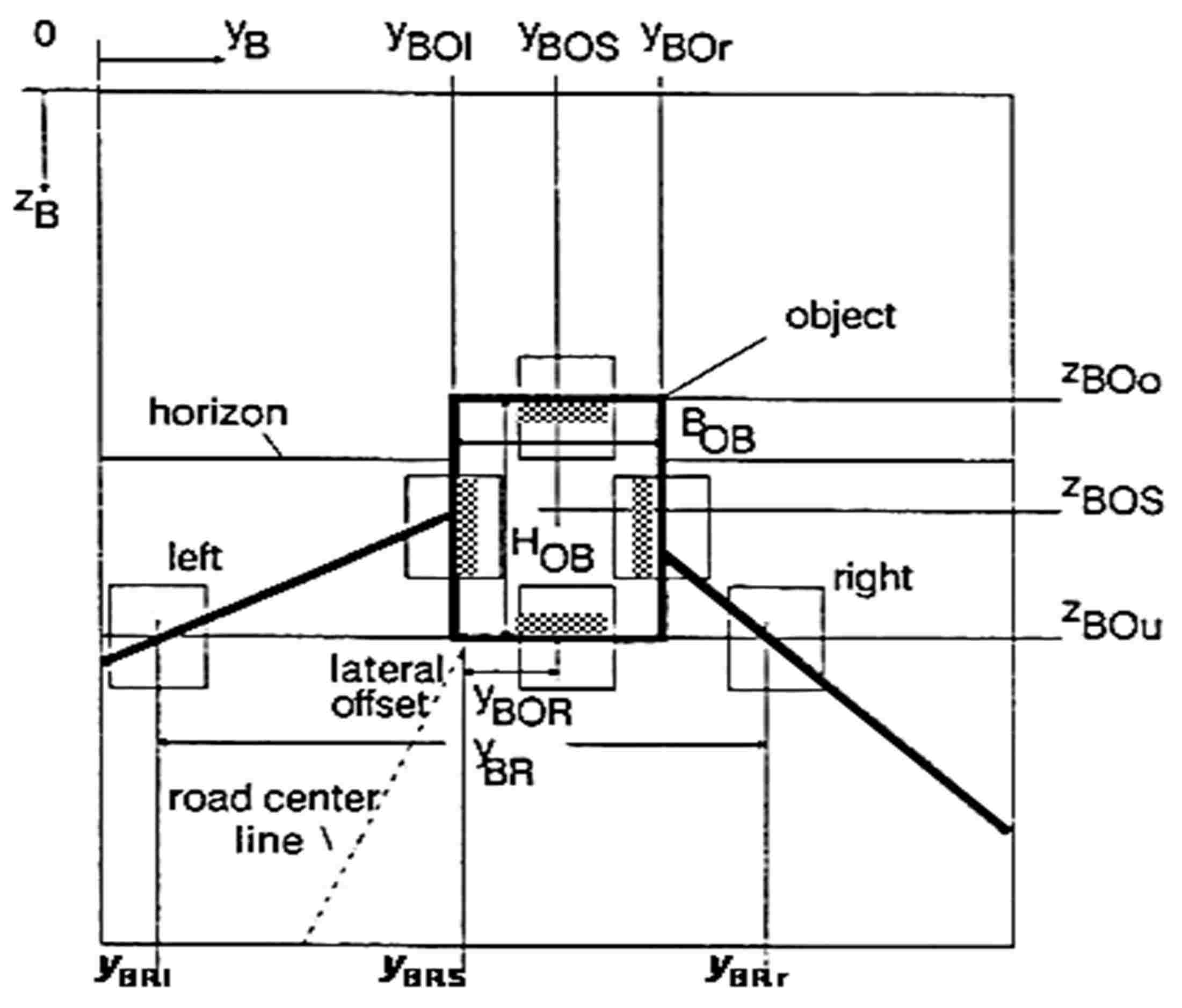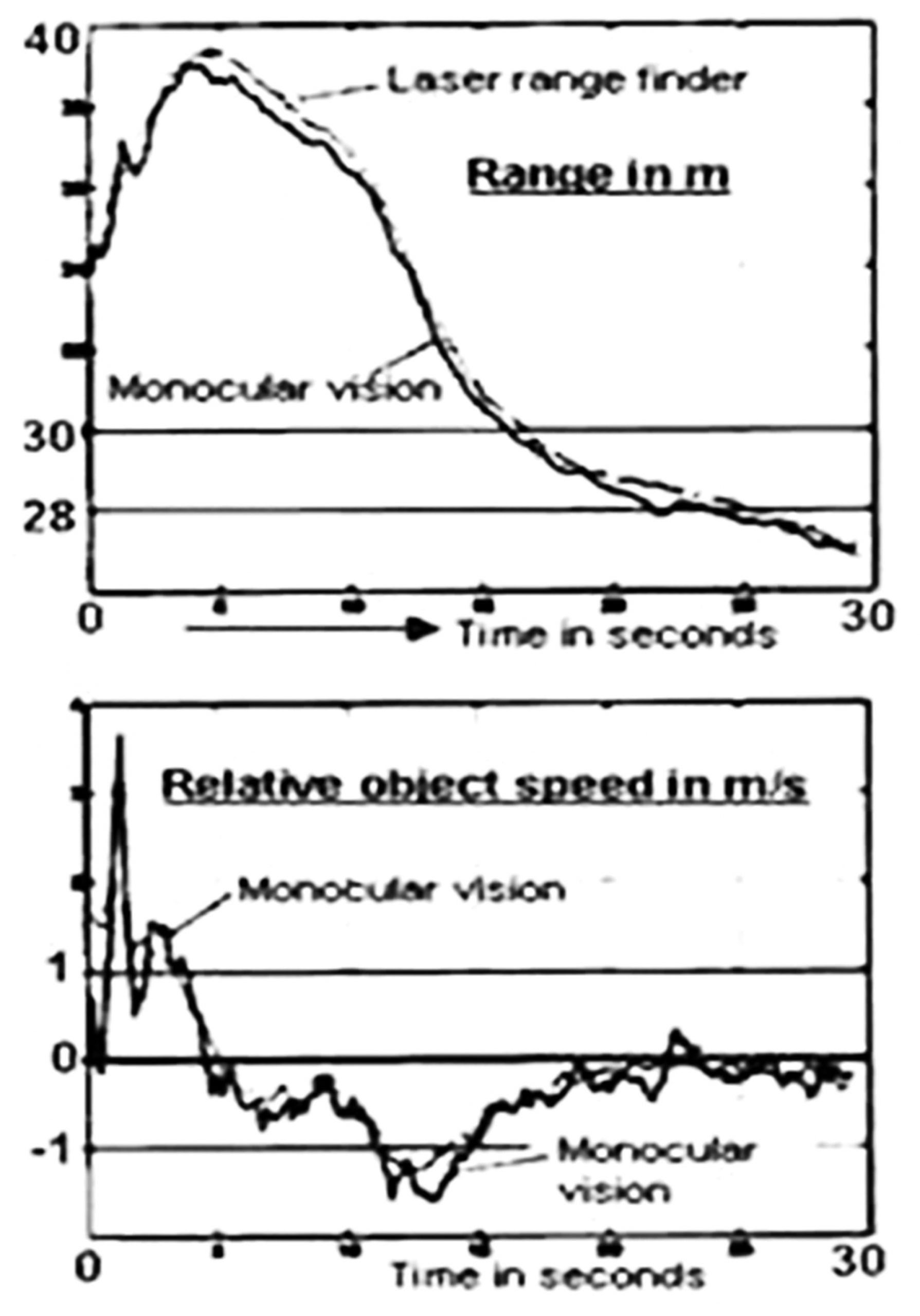A.3.6.1a Stationary obstacle and stopping in front of it 1988
Avoiding obstacles is very essential for safe driving; in monocular vision, the easiest clue to distance of an object on the ground in the driving path is to assume a planar surface and to determine range by the lowest coordinate of a set of several (horizontal) edge features belonging to the same object.
- This property may be checked by a homogeneously bright or dark region between the edge features.
- The distance to the object is then given by the row index of the lowest feature, assuming that gravity pulls the object to the ground.
- Once a set of outer edges has been found, commanding the vertical search in the next image at the center between the horizontal features in the present image leads to tracking of the object vertically with relatively little effort;
similarly commanding the horizontal search at the center between the vertical features leads to horizontal tracking. - Together, the coordinates found approximately mark the center of the obstacle area; range is derived from the row coordinate of the lowest feature in the vertical.
Final demo of project “Autonomous Mobile Systems” in Rastatt, 1988:
Stopping in front of a trash-can detected by vision at a speed of ~ 40 km/h.
References
Dickmanns ED, Christians T (1989). Relative 3-D-state Estimation for Autonomous Visual Guidance of Road Vehicles. In T. Kanade et al (eds): ‚Intelligent Autonomous Systems 2‘, Amsterdam, Vol. 2, pp 683-693; also appeared in: Robotics and Autonomous Systems 7 (1991), Elsevier Science Publ., pp 113-123 pdf
Dickmanns ED (2007). Dynamic Vision for Perception and Control of Motion. Springer-Verlag, (Section 11.2) Content
A.3.6.1b Visually controlled distance keeping to vehicle in front
Nonetheless it could be proven that even monocular vision was able to solve the task under normal conditions. The figure to the left shows
- a comparison in range (top) and
- relative speed (bottom) estimated with
- a mono-beam laser range finder, hand-pointed to the vehicle of interest (thin curves), and the 4-D monocular dynamic vision system (heavy curves).
The agreement is quite good. First results of visual ‘Stop & Go’ have been demonstrated at the demo Prometheus 1, Torino, 1991.
Video 09 – 1991 Turin VisionBasedStop BehindCar.mp4
References
Thomanek F, Dickmanns D (1992). Obstacle Detection, Tracking and State Estimation for Autonomous Road Vehicle Guidance. IEEE/RSJ Int. Conf. on Intelligent Robots and Systems, IROS) Vol. II, Raleigh, pp. 1399-1406
Schmid M, Thomanek F (1993). Real Time Detection and Recognition of Vehicles for an Autonomous Guidance and Control System. Pattern Recognition and Image Analysis, Vol. 3, No. 3, pp 377-380
Brüdigam C (1994). Intelligente Fahrmanöver sehender autonomer Fahrzeuge in autobahnähnlicher Umgebung. Dissertation, UniBwM / LRT. Kurzfassg
Thomanek F. (1996). Visuelle Erkennung und Zustandsschätzung von mehreren Straßenfahrzeugen zur autonomen Fahrzeugführung. Dissertation, UniBwM / LRT. Kurzfassg

